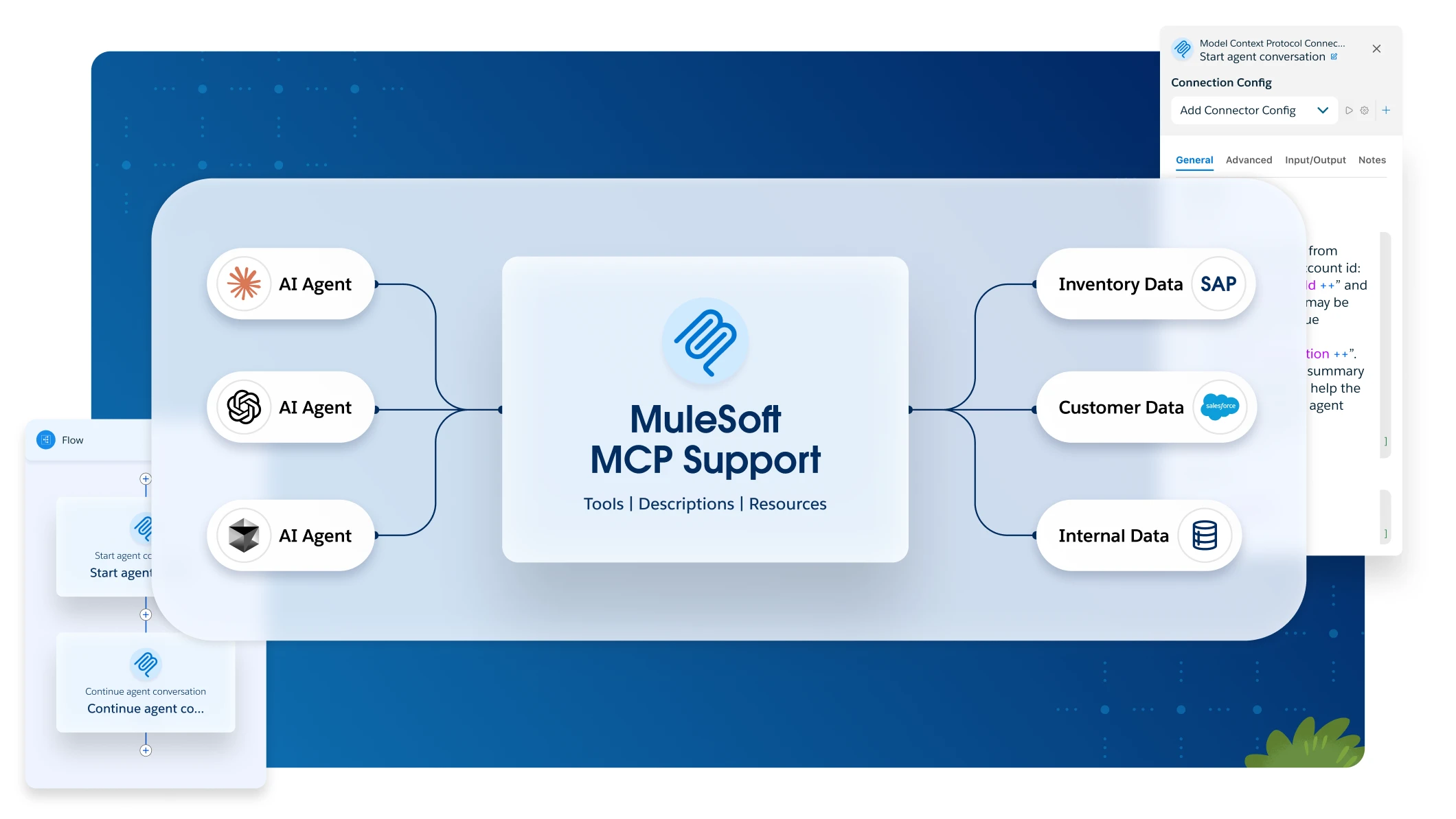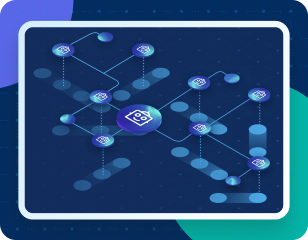As IT teams adopt modern technologies like AI, machine learning, and cloud-native architectures, the overall technology stack becomes significantly more dynamic and layered. These advancements bring powerful capabilities, but they also introduce greater operational complexity and a wider surface area for potential failures.
Whether it’s performance bottlenecks in distributed systems, misconfigured services, or subtle issues introduced by automated workflows, the risk of disruptions grows with each new integration. That’s why robust, real-time monitoring isn’t just a nice-to-have — it’s essential for maintaining system health, ensuring uptime, and enabling fast, informed responses when things go wrong.
App health after deployment
Today’s businesses depend on complex networks of applications to keep everything connected: sharing data, automating tasks, and ensuring systems run smoothly. But without keeping a close eye on how those networks are performing, things can slip through the cracks, causing slowdowns, security issues, or unexpected outages that disrupt operations.
Maintaining application health after deployment requires two essential capabilities:
- Visibility: The ability to monitor system performance, detect anomalies, and assess real-time conditions.
- Traceability: A detailed record of past events, changes, and interactions that help with troubleshooting and optimization.
Visibility and traceability support proactive management, improve reliability, and keep your operations running efficiently. Without them, your applications are more likely to run into problems that hurt the user experience, and may even open the door to security risks.
What can go wrong without visibility:
- Undetected performance issues: High latency or downtime in an API goes unnoticed, slowing down processes or causing features to break without warning.
- Security vulnerabilities: Without real-time insight, unusual activity like unauthorized access or data leaks can go unnoticed.
- Unmonitored data flows: If you can’t see where and how data is moving, it’s nearly impossible to ensure that it is accurate, timely, or secure.
- Delayed response times: When something breaks, teams can’t act quickly because they don’t know where the problem is.
What can go wrong without traceability:
- Hard-to-diagnose bugs: When issues arise, a lack of historical data makes it difficult to track the root cause across services or APIs.
- Poor integration management: Without documentation, teams struggle to understand how systems are connected, slowing down updates and scaling efforts.
- Compliance risks: No audit trails or change logs can lead to regulatory violations, especially in industries like healthcare or finance.
- Team inefficiency: New team members or external stakeholders face steep learning curves without records of how systems evolved or were configured.
To ensure seamless operation after deployment, businesses need tools that provide both real-time visibility and a detailed record of system events. By integrating the right tools and techniques, you can keep your systems under constant observation, easily trace performance issues, and improve the overall reliability of your infrastructure.
Tools and techniques for comprehensive monitoring
As apps interact across multiple systems and services, having the right tools in place to observe, trace, and analyze what’s happening behind the scenes is key to keeping things running smoothly. Whether you’re troubleshooting slowdowns or trying to prevent future issues, good observability helps you stay ahead of problems, not just react to them.
Let’s go through some of the most important elements that strengthen monitoring in integration-heavy environments.
Distributed tracing
Distributed tracing helps you follow the path of a request as it travels through various services and microservices in your system. Each request gets a unique trace ID, allowing developers to map out how data flows and identify exactly where slowdowns or errors occur. It’s incredibly helpful for troubleshooting complex issues and ensuring different parts of your stack work well together.
For example, suppose users are reporting that a checkout page is slow to load. In that case, distributed tracing can reveal that the delay is coming from a third-party payment service taking longer than usual to respond – pinpointing the exact source of the bottleneck.
Sending trace data to external tools
Many teams use observability platforms, such as Datadog, to centralize and analyze their trace data. OpenTelemetry, a widely adopted open-source standard, facilitates the collection and export of telemetry data, including traces, metrics, and logs. By leveraging OpenTelemetry, teams can seamlessly send trace data to external tools for deeper insights. This enables access to richer analytics, centralized dashboards, and automated alerts, making detecting anomalies and optimizing performance easier without switching contexts.
Customizable analytics
No two businesses have the same monitoring needs. With configurable analytics, you can define which metrics matter most, set up alerts when something goes off track, and generate insights that align with your goals. This gives you the flexibility to track what’s important, spot trends before they become problems, and make smarter decisions based on real-time data.
Imagine your app’s usage spikes during peak hours, and response times start creeping up. With custom analytics, you can monitor latency by endpoint, set performance thresholds, and trigger alerts if things exceed acceptable limits, giving you time to scale resources before users feel the impact.
Maintain application health with MuleSoft’s flexible monitoring solution
Anypoint Monitoring is a built-in feature of the MuleSoft ecosystem that enhances operational efficiency by offering real-time visibility into APIs, integrations, and microservices running on the Anypoint Platform. It integrates seamlessly with MuleSoft applications to track performance, detect anomalies, and simplify troubleshooting. Here’s how it fits into both MuleSoft and broader monitoring strategies:
Native integration with MuleSoft applications
Anypoint Monitoring is tightly integrated with MuleSoft’s runtime engine, enabling direct monitoring of APIs, data flows, and connectors. This native integration provides detailed insights into service-level metrics like response times, throughput, and error rates. For example, it can monitor how effectively an API handles traffic, helping teams spot bottlenecks or performance issues quickly.
Custom dashboards and alerts
Teams can build custom dashboards to visualize critical metrics and monitor application health. Configurable alerts for issues like slow response times or failed transactions help improve response times and reduce downtime.
End-to-end visibility
By connecting all MuleSoft APIs and applications, Anypoint Monitoring offers a holistic view of the integration landscape. This comprehensive visibility makes identifying and resolving issues across interconnected services easier.
Compatibility with existing monitoring tools
Anypoint Monitoring integrates with third-party observability platforms like Splunk, Datadog, and New Relic. This flexibility lets organizations incorporate MuleSoft metrics into their enterprise-wide monitoring systems for a unified operational view.
For instance, a company using a non-MuleSoft application for log analysis can import Anypoint metrics to correlate data and improve root cause analysis.
Distributed tracing
Anypoint Monitoring includes built-in distributed tracing to follow transactions as they move through multiple MuleSoft applications, APIs, and systems. It helps teams visualize the full lifecycle of a request, pinpoint delays or failures within distributed architectures, and correlate events across services for more accurate root cause analysis.
For example, tracing reveals the exact point of failure if an API call fails due to a downstream database timeout – enabling faster and more informed troubleshooting.
Customizable analytics
Anypoint Monitoring supports tailored analytics for tracking metrics that align with specific business goals or integration use cases. Teams can set up dashboards to monitor KPIs such as API usage, latency, or error rates, ensuring alignment with operational objectives.
Advanced reporting capabilities also allow teams to identify usage trends, predict capacity needs, and optimize underperforming services – for instance, by flagging APIs that may be decommissioned or scaled.
Proactive troubleshooting
With historical data, trend analysis, and drill-down capabilities, Anypoint Monitoring enables teams to catch and address potential issues before they affect end users.
Deploy, monitor, manage: Building a resilient app network
While monitoring is crucial for ensuring optimal performance, security, and user satisfaction, it’s just one aspect of a well-rounded app network. To truly maintain a healthy system – especially when integrating cutting-edge technologies like AI and machine learning – you also need to consider deployment and management. Effective deployment ensures your applications are rolled out efficiently, while strong management capabilities allow you to maintain and scale your systems over time. Learn more in our whitepaper: Deploy, Monitor, and Manage.









